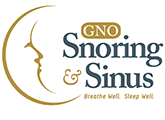Inferior Turbinate Reduction

Non-allergic rhinitis does not have a basis in an immune response. There are many different forms of non-allergic rhinitis.
Irritative Rhinitis: Patients working in environments with chemicals, solvents and even cigarette smoke can experience direct irritation of their nasal mucosa, causing symptoms of rhinitis.
Hormonal Rhinitis: Pregnant women often complain of nasal congestion during the 2nd and 3rd trimesters of pregnancy. This is commonly referred to as rhinitis of pregnancy and is a result of increased estrogen, which causes increasing edema of the nasal mucosa and symptoms of rhinitis.
Afrin Rhinitis: Patients using Afrin® for long periods of time may realize increasing nasal congestion that requires them to continue using Afrin. This results in a dependency that is difficult to treat with medication.
In either case of allergic or non-allergic rhinitis, inferior turbinate reduction can provide improvement in symptoms of nasal obstruction/congestion when medications or observation has failed to provide results.
Inferior turbinate reduction can reduce the symptoms of nasal congestion by effectively decreasing the size of the inferior turbinates.

The recovery time after an inferior turbinate reduction is short. Patients can expect some nasal congestion due to swelling. After 1 week, patients return to the office for their post-operative visit. No packing is used during this procedure.
If you would like to learn more about inferior turbinate reduction, feel free to contact us for further assessment and treatment.
